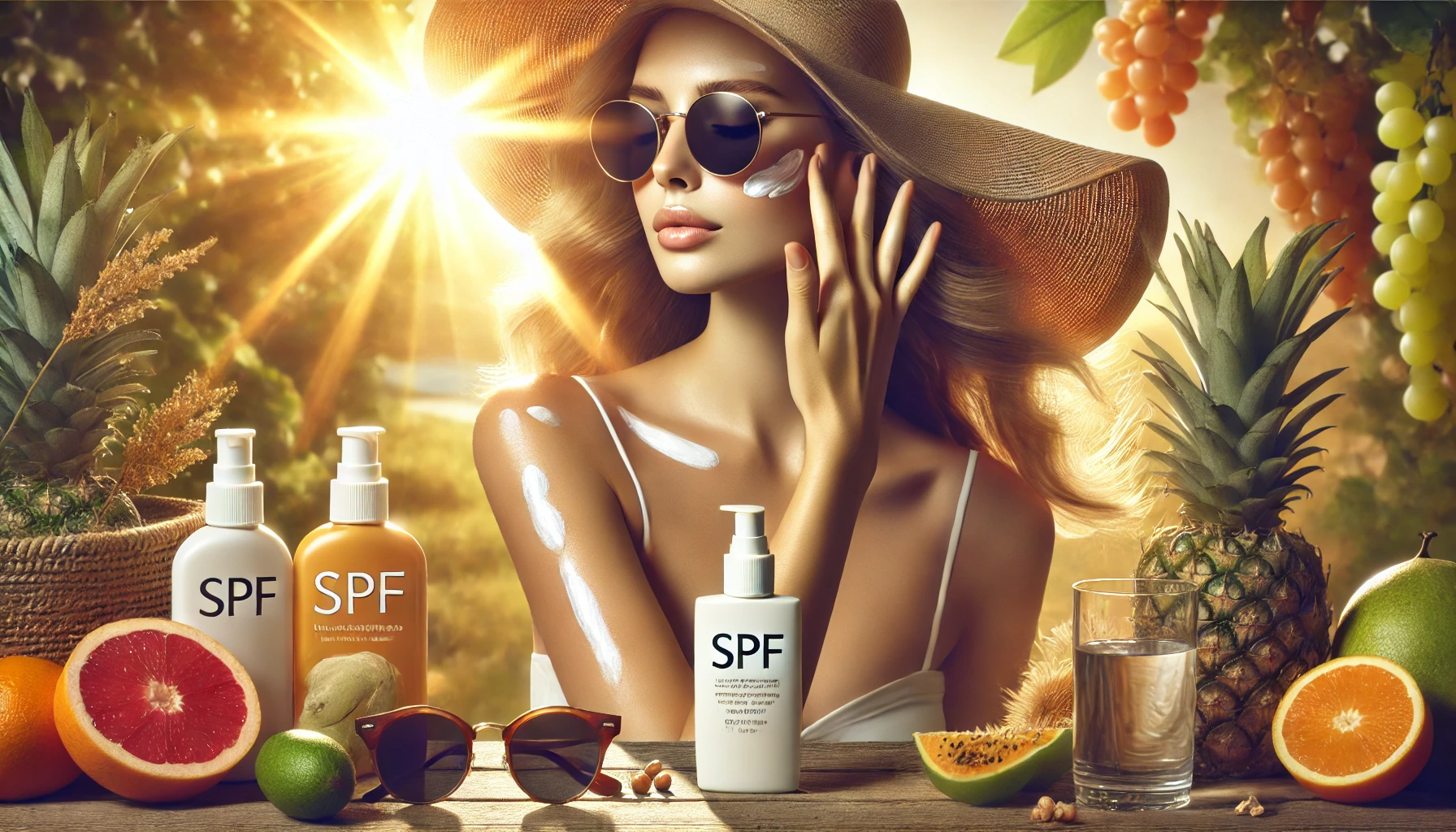Sunlight that reaches the Earth is made up of visible light and ultraviolet (UV) radiation. Among the most common types of UV rays are UVA and UVB. These rays are not visible to the human eye and can only be detected with specific tools designed to measure light wavelengths.
Understanding how these rays affect the skin is crucial for anyone who wants to maintain healthy, youthful skin — and avoid serious risks like skin cancer.
The Difference Between UVA and UVB Rays
The primary difference between UVA and UVB lies in how deeply they penetrate the skin and the type of damage they cause:
- UVB rays stay on the surface layers of the skin and are responsible for visible burns and DNA damage in the outer layer.
- UVA rays, on the other hand, penetrate deeper into the dermis, triggering the release of free radicals — highly reactive molecules that cause long-term cellular damage and contribute to premature aging.
Both types of rays play a role in skin deterioration over time.
SPF, Skin Color, and Lifestyle Habits
There’s a common myth that only people with fair skin are affected by the sun. While it’s true that lighter skin tends to burn more easily, prolonged UV exposure is dangerous for all skin tones.
If you spend time outdoors and cannot avoid sun exposure, here are essential steps you should take:
1. Use Sunscreen with High SPF
More and more people are understanding the importance of using SPF-based products to block UV rays.
Apply sunscreen generously on all exposed areas, especially:
- Arms and legs
- Ears
- Nose
- Feet
- Face
Look for sunscreens that contain zinc oxide, titanium dioxide, benzophenone, oxybenzone, sulisobenzone, or avobenzone (Parsol 1789) — known for their broad-spectrum protection.
2. Wear Protective Clothing
Certain types of clothing are designed to block UV radiation effectively. You can also wear wide-brimmed hats to protect your face and neck. Light, tightly woven fabrics offer better protection.
3. Avoid Unnecessary Exposure
Whether it’s for work or recreation, long hours under direct sun exposure increase the risk of developing skin cancer later in life. If you must be outside, wear proper clothing and reapply sunscreen often.
4. Be Cautious with Artificial Tanning
Tanning beds mostly use UVA rays, which may not cause immediate burns but can cause deep damage. Artificial tanning carries the same risks as UVB exposure — including accelerated aging and cancer.
Nutrition: The Natural Way to Defend Your Skin
What you eat also affects how your skin reacts to the sun.
- Fruits and vegetables are rich in antioxidants like vitamins C, D, and E, which neutralize free radicals and protect skin cells.
- Whole grains, seeds, nuts, and oily fish (such as salmon and tuna) are rich in essential fatty acids, which help keep your skin hydrated and act as a natural UV shield.
- Water and natural juices keep your skin hydrated and support its healing function.
Studies show that dehydrated skin is more prone to sunburn and structural damage.
How UV Rays Trigger Damage and Skin Aging
Yes, a sunny day at the beach is fun — but without proper protection, you’re risking serious skin conditions, including melanoma, one of the most dangerous forms of skin cancer.
Here’s how the damage happens:
- UVB rays trigger the release of chemicals in the top layer of the skin, causing redness, inflammation, and pain (sunburn).
- This damage can start in just 15 minutes and worsen for up to 72 hours after exposure.
- The body sheds the damaged skin through peeling.
- UVA rays reach deeper layers, causing issues like wrinkles, sagging, skin discoloration, and early stages of skin cancer.
Inside the skin, UV rays break DNA strands, leading to mutations — the first step toward cancerous cell growth.
Who’s at Risk for Skin Cancer?
The following groups face higher risks:
- People who’ve had three or more serious sunburns before age 20
- Regular tanners who constantly chase a dark glow
- Outdoor workers and athletes (like farmers and golfers) with long sun exposure
- Individuals with fair skin and light eyes
Ironically, some studies show that small, controlled amounts of sun exposure help the body produce vitamin D, which might help fight cancer. So how can we expose ourselves safely?
Smart Sun Exposure: What Dermatologists Recommend
Experts suggest:
- Limit unprotected exposure to 10–15 minutes at midday
- Use a broad-spectrum sunscreen with SPF 15 or higher daily
- People with sensitive or mature skin should use SPF 30 or higher
- Choose sunscreens that are free from dyes, alcohol, and harsh chemicals
If you plan to spend extended time in the sun:
- Use sunscreens with zinc oxide or titanium dioxide
- Apply sunscreen 30 minutes before exposure
- Reapply every 2 hours, especially after swimming or sweating
- Use water-resistant sunscreen, since 98% of UV rays can penetrate water
Final Thoughts: Protect Your Skin, Protect Your Future
Understanding how the sun affects your skin is the first step toward lifelong skin health and beauty.
With a combination of:
- Daily SPF use
- Protective clothing
- Smart exposure limits
- Hydrating foods
- And awareness of risks
…you can enjoy the sun without the long-term consequences. Healthy, radiant skin is the result of smart daily choices — not just good genes.
